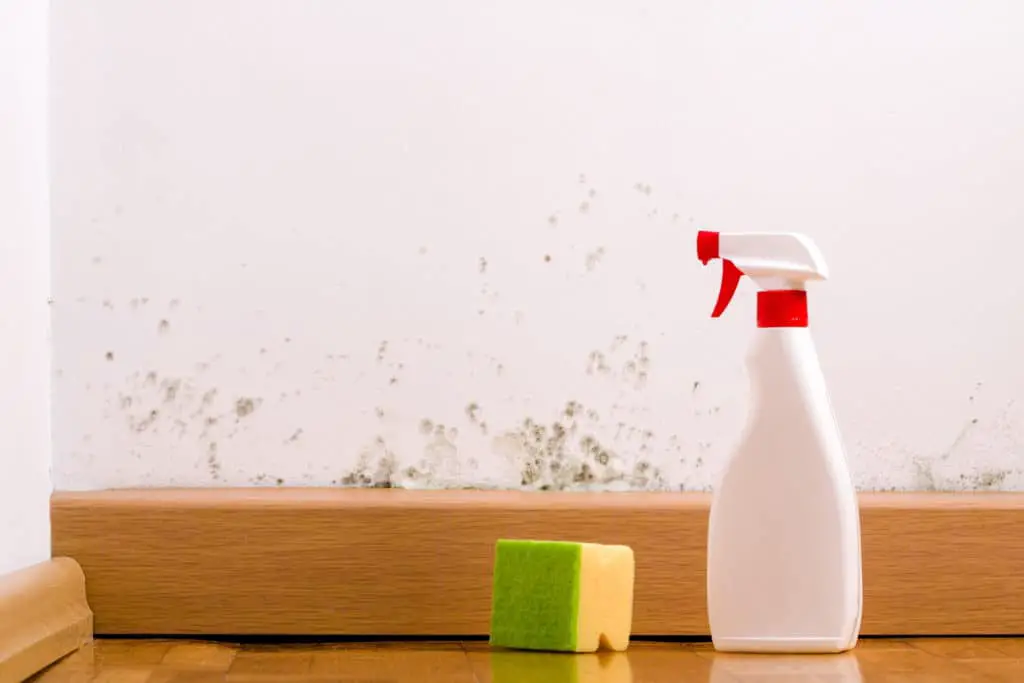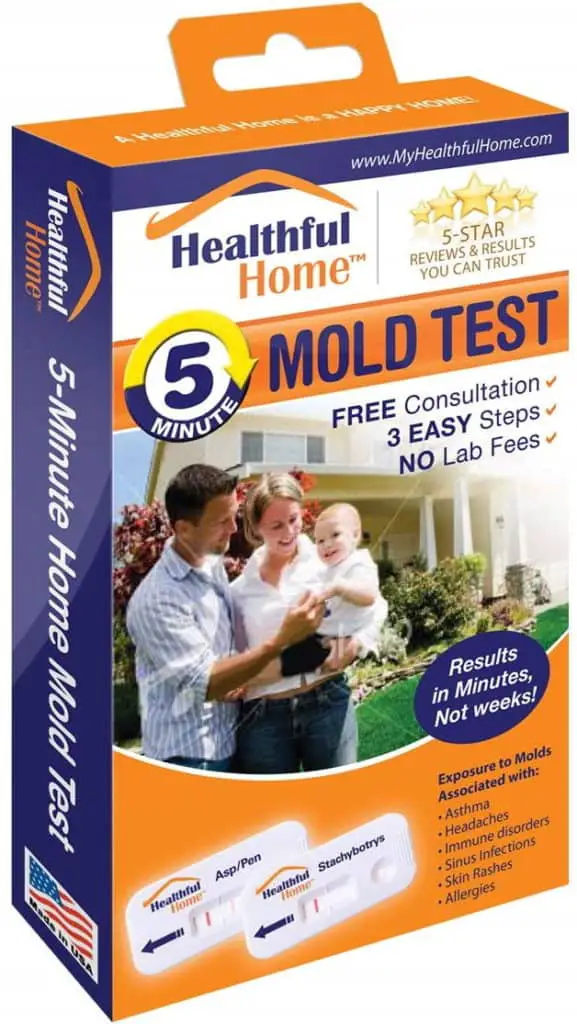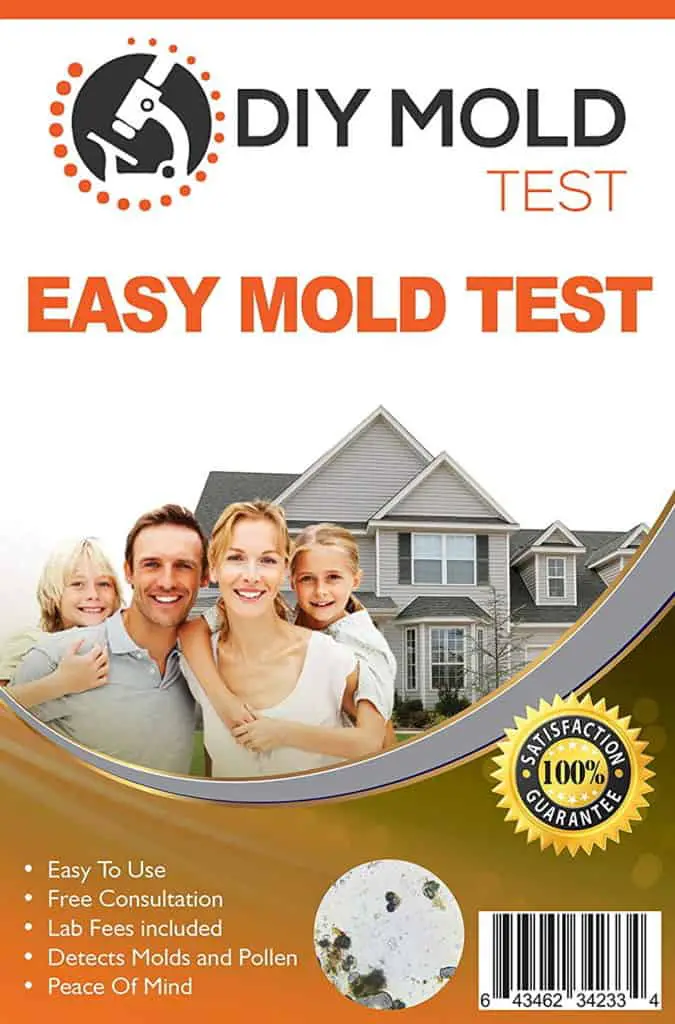
Unlike smoke or Carbon Monoxide, mold isn’t going to set off a nifty little alarm that wakes you up in the middle of the night and says, “Hey. You have mold.” In fact, sometimes, mold can be extremely hard to identify because it is not in any place that you normally look or check for problems.
Many times, mold could have been growing for months or even years, releasing their spores into the air, and thriving on any moisture it can find in the meantime. Mold can even grow behind the walls in your apartment. If there was ever a bad leak or a flood of another unit or from outside, water could have gotten in behind the walls of your apartment and started the mold-growing process.
Disclosure: This post may contain affiliate links and I may earn a small commission when you click on the links at no additional cost to you. As an Amazon Affiliate, I earn from qualifying purchases. Thank you!!
Moving Soon? Get quality cardboard moving boxes for less! – Click Here – Fast and Free Shipping!Mold usually presents itself as black, brown, or green-spotted areas that are normally dark and sometimes wet. Obviously, we have all seen this phenomenon in bathrooms and showers that haven’t been cleaned in a while, but over time this mold can become toxic and put these toxins into the air, which your body is going to start breathing in.
If you have a suspicion that your apartment may have had mold in it in the past, more than likely, it has mold it in it right now and you just don’t know about it.
How Do I Check For Mold In My Apartment?
There are several ways to do a quick check, both physically of the apartment, and of your own body, to see if you potentially have a mold problem.
The first and most common sign is if there is a smell. Like a strong, musty smell as if your apartment smells more like a swimming pool that has just been drained than a clean place to live. Smell is going to be a primary way to determine if you have mold in your apartment or not. In fact, many of the professional restoration services will trust their nose first and foremost when they walk into a new job simply because they have been around the mold so much, they know what it smells like straight away.
The next thing to look for is any discoloration on your walls or floor. You are looking for spots that either look like they currently have mold, which would show as black or brown or green spots, or it may just look like a bad water stain on the floor or wall. This is going to be the telltale sign that there had been significant water present in the past and mold could be hiding behind wherever you see the discoloration.
Sometimes, this discoloration comes along with the drywall or ceiling bubbling out, or perhaps cracking and collapsing after not applying very much pressure. This is evidence of past water damage. Replacing the drywall or ceiling is not that big of a deal, you can have your landlord take care of that without much hassle. What you are worried about here is the danger of mold behind whatever wall or ceiling they are going to replace.
If there is mold behind the wall or ceiling and all they do is patch the hole, that mold is going to stay present in your apartment, continue to grow, and spread the spores airborne to other parts of your unit. Basically, just patching the weak or discolored spot isn’t going to take care of the problem, you need to have them treat your apartment for mold.
The last way you can check for mold is simply by getting in touch with your own body. A chronic cough that is persistent and just won’t go away is a good indicator that you may have mold in your apartment. Skin rashes and feeling fatigued all the time are also symptoms of mold toxicity.
We at Apartment School are NOT in the business of giving health advice. But what we will say is that many people have found that they have become much healthier and relieved these symptoms they had been living with after the mold had been eradicated in their apartment. We are ALSO not advocating getting in touch with your hypochondriac side and attributing every cold, sniffle, or scratchy throat to the presence of mold in your apartment. Sometimes a cold is just a cold.
What we are saying is to be in touch with your body. Notice how it has been reacting and feeling. Do you feel better when you are gone from your apartment for long periods of time? Perhaps a deep clean is in order before you do an at-home mold testing kit before running to your landlord and accusing him of renting you an apartment with mold in it.
Also, make sure that you yourself aren’t the cause of the mold problem. If you are, then it is your job to be the remedy for your apartment and your body.
Mold Testers
You are going to want to make sure that the “mold” you think you are seeing is actually mold. You don’t want to waste your time, you don’t want to waste your landlord or maintenance guy’s time, and you don’t want to appear to your neighbors or landlord to be that paranoid person who thinks there is always something wrong.
The easiest thing to do is to simply order a Mold Test you can use right in your apartment. They are relatively inexpensive and can tell you whether you have mold or not. If you do, they will tell you what type, you can take that to your landlord and figure out a solution together.
Also, if the mold is something that should have been handled by your landlord prior to you finding it, you can have them cover the cost of the mold test as well.
At Apartment School, we recommend a couple of different Mold Detection Solutions.
The first is the Healthful Home 5-Minute Mold Test. This is a very inexpensive test that you can do right in your apartment with no need to send the sample off to a lab, the testing kit will do it right there for you in 5 minutes. If the mold is in your walls, it’s in your air and the dust that floats in the air. This kit will test for the worst kinds of mold without ever having to send anything into a lab.
We like this kit because of its price, it is only $35 bucks, and because you get the results almost immediately. This is crucial if you have some bad types of mold and don’t want to be breathing those spores in any longer than necessary. This is a great option for fast, quick results.
The second option we recommend is the DIY Mold Test. At $45, it isn’t much more expensive than the 5-minute kit, but it has several distinct advantages to it.
The first is that it comes with 3 tests in the kit. You can test in multiple rooms or in several different areas of your apartment with just one kit. The second feature is that it IS sent off to a lab. This only takes a couple of days, but the benefits are that it will give you results on mold and allergens of ALL TYPES, not just a few common types of mold that tend to cause health problems.
While the kit takes a couple of days to process, the results are sent to you in your email right when they finish testing your samples, with results that you can read and understand. The DIY kit is a great way to have quick, comprehensive results without spending hundreds of dollars to call in a professional restoration company.
Is It The Landlord’s Responsibility To Check For Mold?
Do you have reason to think that your apartment has mold in it? If so, the first thing you want to do is tell your landlord. You want to do this so that the mold doesn’t spread throughout the building any more than it already has. From there you can figure out a solution.
Many people are going to be wondering if the landlord is responsible for the testing and removal of the mold. Your landlord is first and foremost responsible to the tenant to providing them with a habitable rental property. This doesn’t mean they are responsible for cleaning up the water damage that you caused while you were living there, but it does mean that they are responsible for making sure your apartment unit was good to go from the beginning of your stay. If it wasn’t, they would be on the hook for testing and cleanup.
Let’s look at a couple of different scenarios.
Say your landlord rented you your apartment and didn’t realize there was mold growing in it. Either behind the walls or in the ceiling due to a leak in the apartment above the year before. In this case, the landlord would be responsible for taking care of the testing and removal of the mold.
More than likely, they would call in a professional restoration company that is experienced in mold and have them do some testing, then fumigation, then treatment of any and all areas that need it.
In this scenario, you would be completely off the hook, and may even be able to talk your landlord at putting you up at a hotel for a few days while the restoration company is taking care of the mold.
Another scenario plays out a bit differently. Let’s say that the tenant was the cause of the mold. Either by a leaky sink, they didn’t take care of or running the water over in their tub repeatedly. Whatever. Something happened on the tenant’s end, and they were the direct cause of the mold growth.
In this case, the landlord would still be obligated to take care of and remove the mold, because it presents a health hazard for not only you but the rest of the building as well, the difference here is that your landlord can definitely make you pay for it since you caused it.
If it was due to lack of proper maintenance, the landlord is going to have to pick up the tab. But you will have your own unique circumstance and situation. You will know what the landlord did or didn’t do, and if you are responsible in any manner. Just knowing these things can help you deal with your landlord in getting the situation taken care of quickly and efficiently so nobody else gets health problems from it.
Ask Your Landlord And Neighbors About The History Of Your Apartment
If you think you may have a mold problem in your apartment that started before you first moved it, ask your maintenance guy and your landlord if there had ever been water damage or a pipe burst or leaked on or around your apartment.
Also, ask your neighbors on all sides of your unit if they remember a time when there was a leak or water or some flooding that occurred. Many times, tenants will stay for a long period of time and will recall if something memorable like that happened.
If any of them do say there was an issue historically, then you may have found the culprit right there. If not, you may want to do some more investigating on your own first. But it is a good way to track down the history of your apartment unit to see if the conditions were present for mold growth.
What To Do If You Find Mold In Your Apartment
You need to talk to your landlord right away. They will either come over themselves or send a maintenance guy over to assess the situation. From there, they will probably call a professional mold or restoration company to come and deal with the problem.
These services are expensive though, so your landlord is going to want to know with high certainty that there actually IS mold where you say there is. Especially if this is behind a wall or ceiling that they are going to have to cut out and repair because everything they do from here on out is going to have a cost.
This is where getting one of the two mold kits would be a good idea. If there IS mold that shows up on the test, and you know it is a problem from before you moved in, just send your landlord the receipt for the test. More than likely he is going to be happy to pay for it, as it is going to be a fraction of the cost a professional company would charge them to test for it. You have shown initiative in finding and detecting the problem, they will probably reimburse you for your trouble.
Landlords, almost across the board, are going to work at getting the mold out one way or another, even if they aren’t happy about it because mold is something that can damage their property, and that’s the last thing they want.
Can I Break My Lease Because Of Mold?
If the mold is shown to have been there since before you moved in, and your landlord had you move into a unit that had mold in it, and you are suffering health problems because of it, you can absolutely ask to break your lease.
More often than not, the landlord is either going to let you out of the lease so they can go address the significant mold problem, or they are going to ask you to stay and they will take care of the mold problem while you are still a tenant, thus fulfilling his obligation.
Which route you want to take as tenant depends on how bad the mold is, how bad, if any, symptoms you are having because of the mold, and how conducive the landlord is with working with you. Did he offer to put you up at a hotel for a few days while a professional company takes care of the mold? If so, that’s a good sign you have a decent landlord and may be in your best interest to stay.
If the problem persists, the landlord is slow to get around to it, or you are having major health problems because of the mold, you can absolutely ask to leave your lease agreement because of this.


